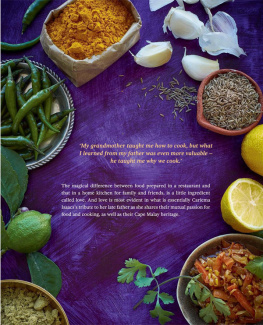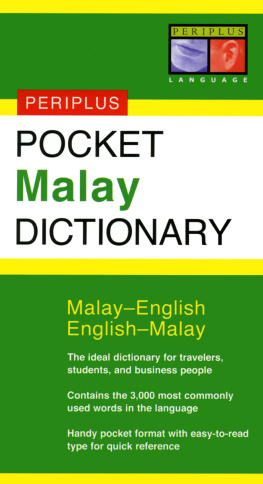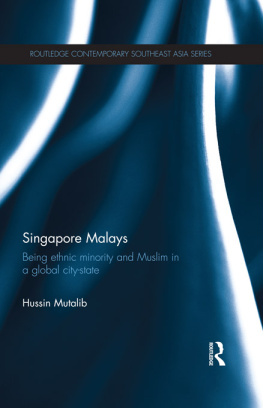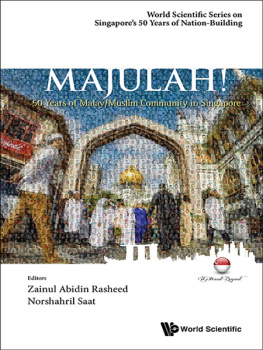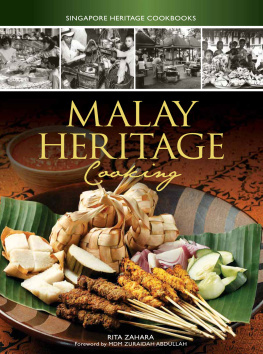MALAY KINSHIP AND MARRIAGE IN SINGAPORE
The Monographs on Social Anthropology were established in 1940 and aim to publish results of modern anthropological research of primary interest to specialists.
The continuation of the series was made possible by a grant in aid from the Wenner-Gren Foundation for Anthropological Research, and more recently by a further grant from the Governors of the London School of Economics and Political Science. Income from sales is returned to a rotating fund to assist further publications.
The Monographs are under the direction of an Editorial Board associated with the Department of Anthropology of the London School of Economics and Political Science.
London School of Economics Monographs on Social Anthropology
No. 21
Malay Kinship and Marriage in Singapore
by
Judith Djamour
First published 1959 by THE ATHLONE PRESS
Published 2020 by Routledge
2 Park Square, Milton Park, Abingdon, Oxon OX14 4RN
605 Third Avenue, New York, NY 10017
Routledge is an imprint of the Taylor & Francis Group, an informa business
Judith Djamour, 1959
All rights reserved. No part of this book may be reprinted or reproduced or utilised in any form or by any electronic, mechanical, or other means, now known or hereafter invented, including photocopying and recording, or in any information storage or retrieval system, without permission in writing from the publishers.
Notice:
Product or corporate names may be trademarks or registered trademarks, and are used only for identification and explanation without intent to infringe.
ISBN 13: 978-1-8452-0005-3 (hbk)
Preface
THIS book is a very shortened version of a thesis submitted for the degree of Ph.D. in the University of London. Several chapters of it, in a somewhat different form, were part of a Report to the Colonial Social Science Research Council on fieldwork I carried out under its auspices from January 1949 to November 1950 in Singapore. The title of the Report was The Family Structure of the Singapore Malays.
Most of the material contained in the section on Adoption in has been published as an article, 'Adoption of Children Among Singapore Malaysians', in he Journal of the Royal Anthropological Institute, vol. lxxxii, Part II, 1952.
I wish to acknowledge here with deep gratitude the great help, guidance, and advice I received from my supervisor, Professor Raymond Firth, in analysing the material collected in the field and in the writing up of the thesis upon which this work is based.
My husband, Dr Maurice Freedman, was in Singapore during the same period and under the same auspices, carrying out fieldwork on Chinese family organization. I have benefited greatly from discussions we had both during the period of the research itself and later. I am also very grateful to him for his valuable suggestions and critical comments on the typescript.
In 1954 my husband and I spent some months in Indonesia, in the course of which we carried out brief investigations of the social organization of two areas of Java and a Minangkabau village in Sumatra. I incidentally refer to some of the Indonesian material we gathered.
J. D.
London,
July 1958
- See the recommendations in Professor Raymond Firth's Report on Social Science Research in Malaya, Singapore 1948, pp. 33-4.
I WENT to Singapore in January 1949 and left at the end of November 1950. The main period of fieldwork was divided almost equally between a fishing community on the south-west coast and an urban area. I also spent two months in an exclusively Malay suburb known as the Malay Settlement. The inhabitants of the fishing villagewhich I call Tanjong were local Malays, whereas the Malays in the urban and suburban areas were a mixed local-Malay and immigrant-Indonesian group, with a preponderance in the number of immigrants. Tanjong was an isolated village of just over two hundred inhabitants; the population had been principally engaged in fishing for many generations; it was entirely Malay, with the exception of the five shopkeepers, one of whom was Chinese and the others Malabari Muslims. The urban area where I lived had a mixed Malay, Chinese, and Indian population, living in quarters built by the Singapore Improvement Trust; the Malay population there was made up of the households of labourers and semi-skilled workers, with a sprinkling of skilled workers, office messengers, and junior clerks. The Malay Settlement had a very mixed occupational pattern: its inhabitants included labourers, skilled and semi-skilled workers, small tradesmen; and a number of civil servants, schoolteachers and clerks. I rented a small room in a house accommodating several Malay households.
Apart from intensive fieldwork in these three areas I established contact with, and visited regularly, descendants of the Singapore Royal Family as well as several households of schoolteachers and clerks in different areas of the Colony.
I used Malay as the language medium and employed no interpreters or assistants.
In this book my aim is to make an analysis of the structure of Malay kinship and marriage in Singapore on the basis of my research there. I deal exclusively with conditions during the two years 1949-50.
When I went to the field I had no specific major theory which I wanted to test, but I was particularly interested in the problem of the instability of Malay marriage and in the effects which this instability had on the divorced couples themselves, on their children, and on their respective kinsmen. Some obvious points I had to consider were the transfer of property at marriage and at divorce, the pattern of residence, the custody of the children. and the facility of remarrying.
I also knew that Malays in the Island had been for several generations an economically depressed minority; that they had no official political representation as Malays, but only (together with Indians and Arabs) as Muslims; that they had little or no effective community organization; and no tribal, clan or lineage organization whatsoever. These facts led me to the conclusion that it was important to determine whether in contrast to the lack of formal corporate groupings there might not be special types of economic solidarity of an informal nature between a person and his close kinsmen.
A few months after I arrived in the Colony I became interested in a third problem, that of the transfer of young children, and I realized that the institution of adoption formed an integral part of Malay family organization; 'integral' because if the institution did not exist, family organization would, I think, be different.
1
The Structure of Singapore Malay Society
SINGAPORE is a political unit made up of a conglomeration of diverse cultural elements. In 1819 it was acquired by Sir Stamford Raffles on behalf of the East India Company from the Sultan of Johore. The Colony in 1950 included Christmas Island and the CocosKeeling Islands. The last published Census, in 1947, gave the distribution of the population as follows:
The State of Johore belonged to the Riau-Lingga dynasty, and it included the Island of Singapore. Before Raffles landed at Singapore the younger son of the late Riau-Lingga ruler had proclaimed himself Sultan of Johore during the temporary absence of his older brother, Tngku Hussein. Raffles sent to Riau for Tngku Hussein, acknowledged him as Sultan of Johore, and signed with him a treaty granting the British the right to settle on the Island of Singapore. See F. Swettenham,




